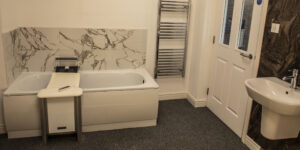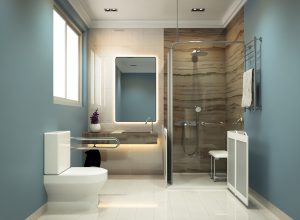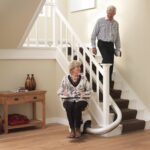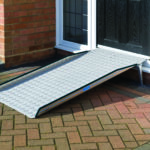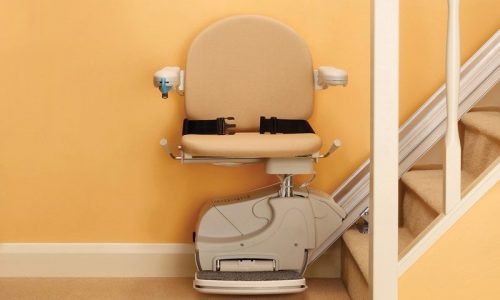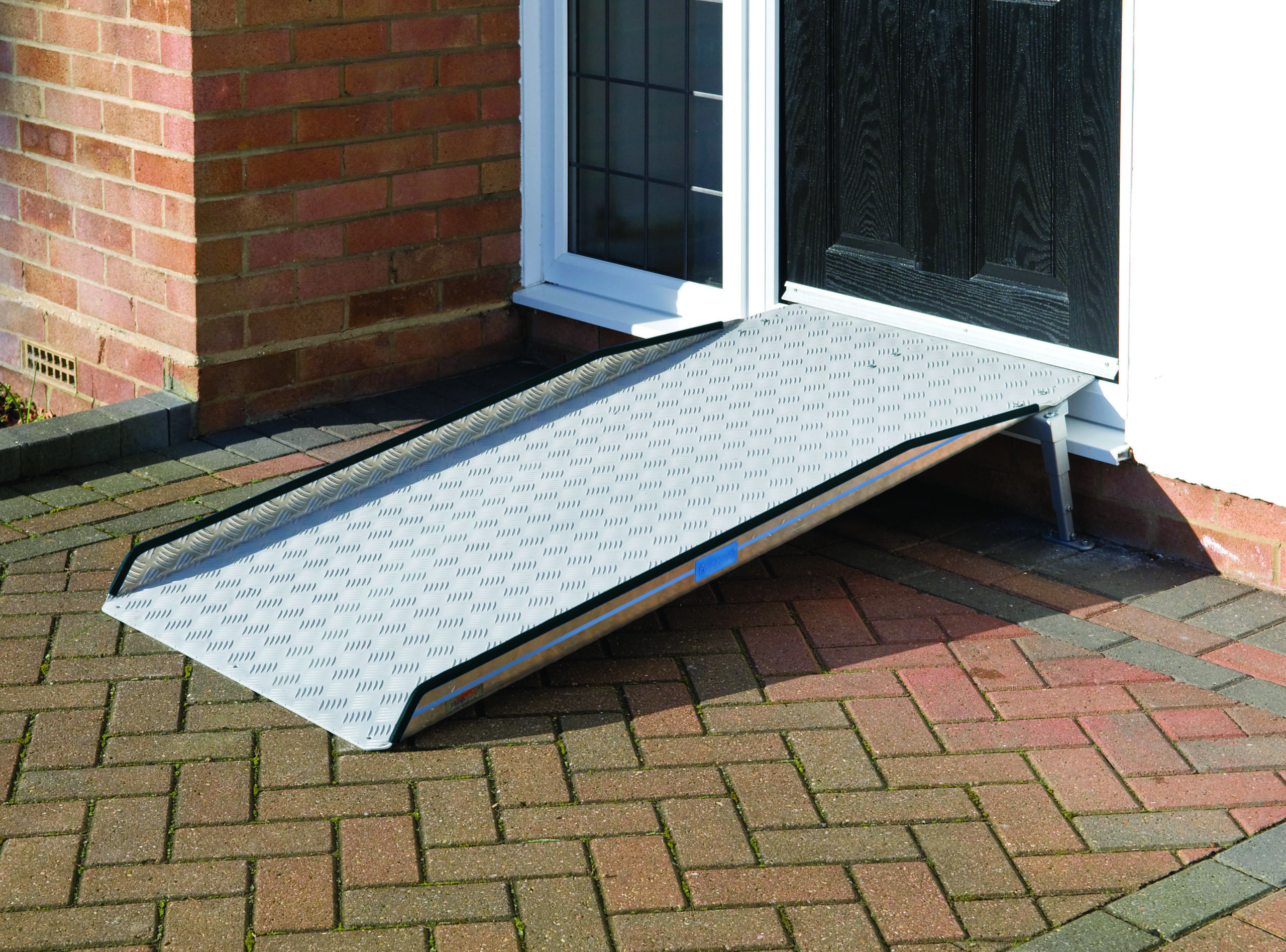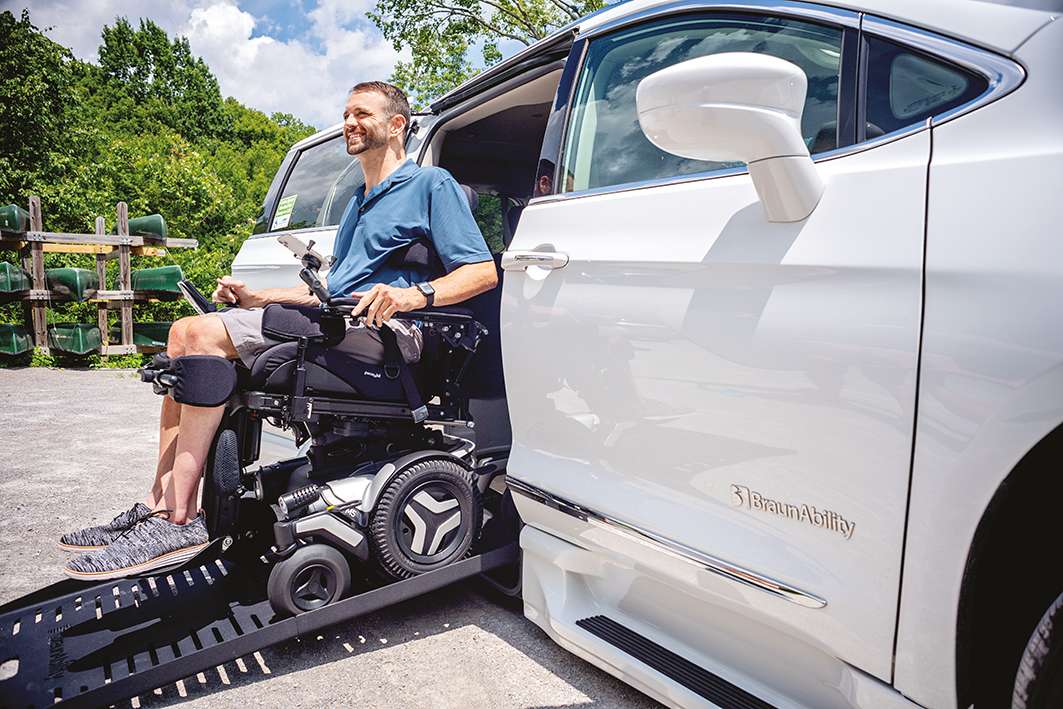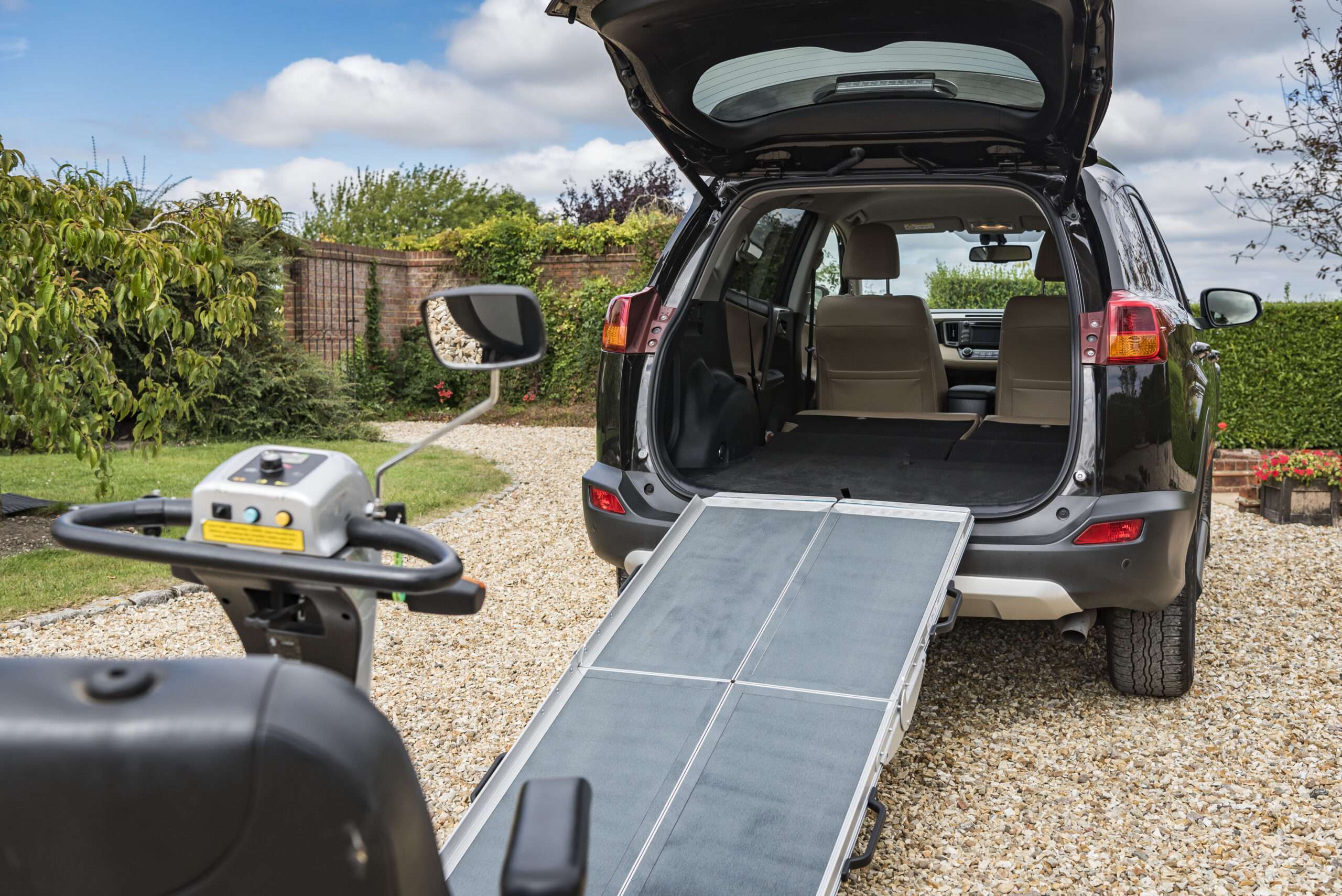When your stairlift suddenly stops working, it can feel like losing your independence overnight. At Aquadapt we understand how essential your stairlift is for maintaining mobility and confidence in your own home. The good news is that many common stairlift faults can be resolved in minutes with simple troubleshooting steps, and no engineer required.
As specialists in designing and installing accessible home environments across the UK, we’ve compiled this practical guide to help you identify and fix the most frequent stairlift issues. While many problems have straightforward solutions, always prioritise safety and contact our trained advisers if you’re uncertain about any repair attempts.
Jump straight to…
Safety First: Before You Start Troubleshooting
Before attempting any checks:
- Turn the isolator key to OFF and remove it completely.
- Never bypass safety sensors or limit switches, they’re there to protect you.
- Stop immediately if you smell burning, see damaged cables, or the lift has sustained impact.
- Keep the area clear of obstacles and ensure good lighting.
If you notice any of these warning signs, don’t power the lift back on. Contact a qualified engineer immediately.
Troubleshooting Common Stairlift Faults
These rapid checks resolve a surprising number of service callouts and could save you time and money.
Power and Charging Issues
The Problem: No lights, no movement, complete silence.
Quick Checks:
- Confirm the isolator key is turned fully ON and properly inserted.
- Check the charger plug is secure and the wall socket is switched on.
- Verify the chair is correctly parked on its charging point, look for the charge indicator light.
- Wipe charging contacts with a clean, dry cloth (avoid sprays or lubricants).
- Check if a circuit breaker has tripped in your consumer unit.
Why This Happens: Isolator keys, charging points, and safety interlocks are standard features across modern stairlifts. A key that’s not fully engaged or a chair positioned just millimetres off the charge point can prevent operation entirely.
Track Obstructions
The Problem: The lift won’t start or stops unexpectedly mid-journey.
Quick Checks:
- Inspect the entire track for dropped items, pet hair, dust, or debris.
- Clear around the footplate and check the underside safety edges.
- Look for new carpeting or flooring that might interfere with the rail.
- Remove any trailing wires or cables near the stairs.
Why This Happens: Modern stairlifts have multiple safety sensors on the footplate, carriage sides, and underpan. Even a small piece of fluff can trigger these sensors, causing the lift to refuse movement. This is a safety feature, not a fault and it’s designed to protect you from crushing or pinching hazards.
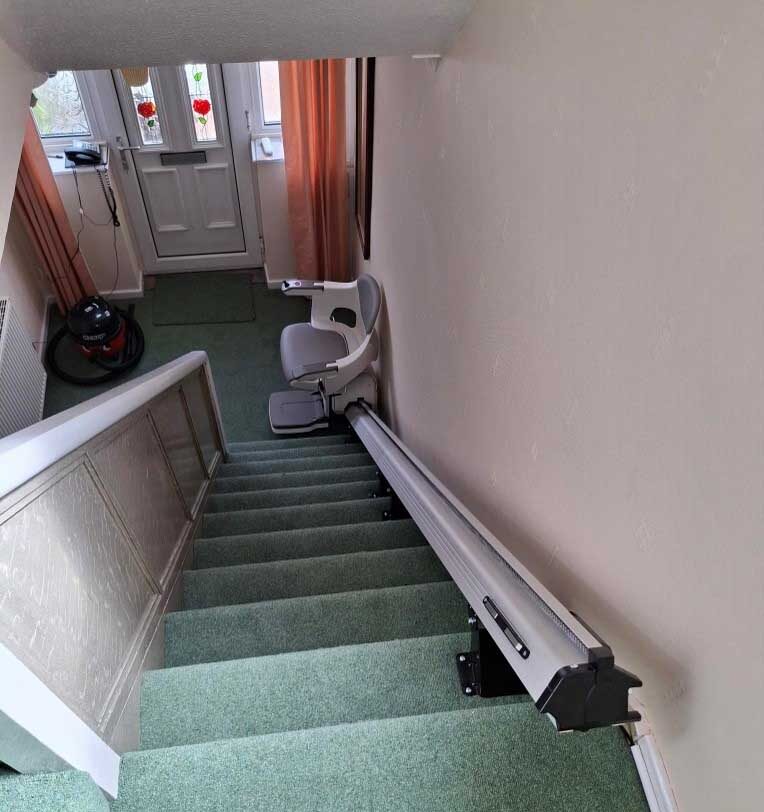
Seat, Armrest, and Footrest Position
The Problem: The lift has power but refuses to move.
Quick Checks:
- Fold the footrest completely down until it clicks.
- Lower both armrests to the horizontal position.
- Swivel the seat into the travel position (facing the stairs) and lock it firmly until you hear a click.
- Try gently moving the seat – if it rotates freely, it’s not properly locked.
Why This Happens: Incorrectly positioned components trip safety interlocks. The lift simply won’t operate if it detects you’re not in a safe riding position.
Remote Control Problems
The Problem: The remote won’t call or send the lift.
Quick Checks:
- Replace the remote batteries with fresh ones.
- Check batteries are inserted correctly (positive and negative terminals).
- Try the controls on the chair armrest instead.
- Re-pair the remote if your model supports this feature (check your manual).
Why This Happens: Flat batteries or loss of pairing are common non-faults that feel like serious problems but take seconds to fix.
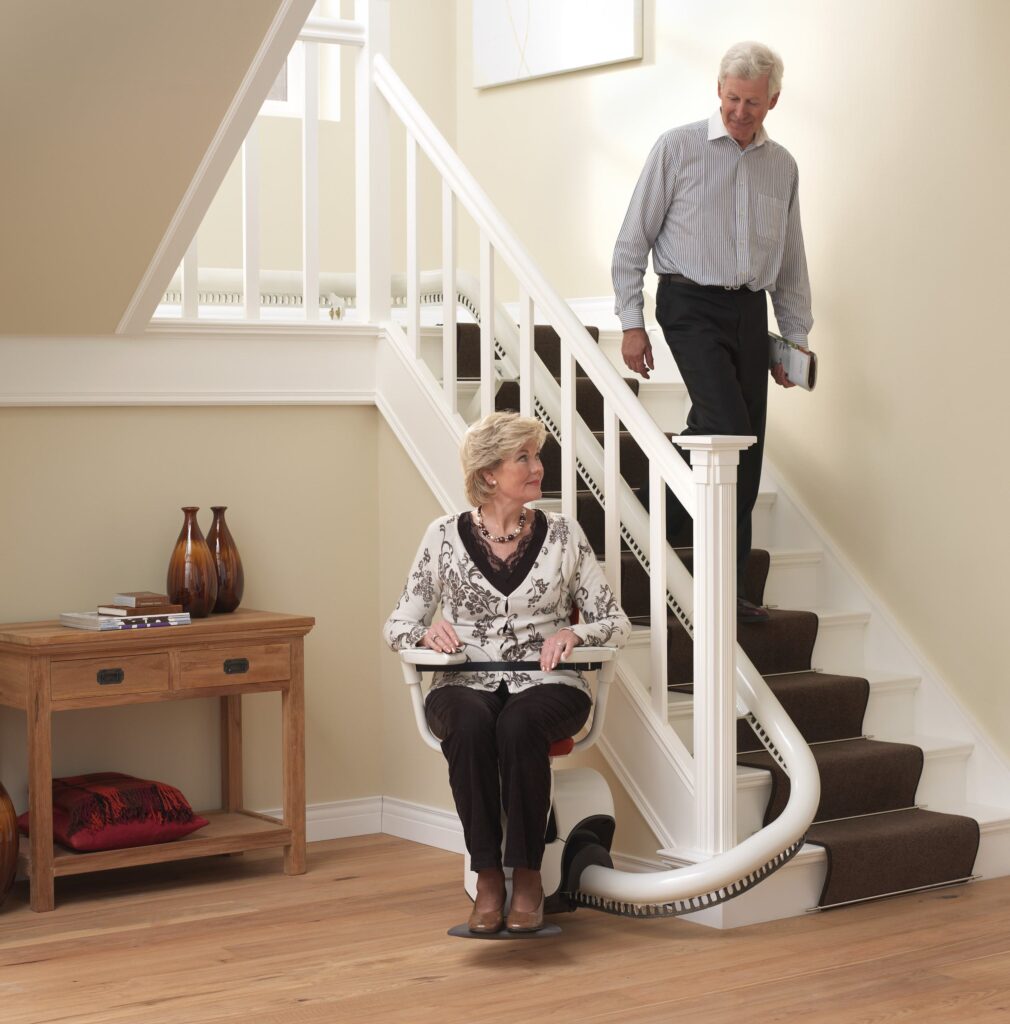
Targeted Solutions for Specific Problems
The Stairlift Won’t Move at All
Beyond the quick checks above, try this:
- Sit on the chair and fasten the safety belt.
- Hold the armrest toggle continuously for 3-5 seconds.
- Try the call/send control located at the top and bottom landings.
- Check that the battery disconnect switch (usually on the carriage) is in the ON position.
Continuous Beeping or Alarm Sounds
What It Means: Your stairlift is telling you something—usually a charging issue.
Solutions:
- Drive the chair gently onto the charge point until the charging light illuminates.
- Check the charger LED is showing active charging status.
- Inspect charging contacts and clean them with a dry cloth.
- Verify the main power switch hasn’t been accidentally turned off.
These alarms protect battery health and alert you to problems before they become serious. Don’t ignore persistent beeping, it’s your lift asking for help.
Jerky Ride or Unusual Noises
What It Suggests: Dirt on the rail, worn components, or alignment issues.
What You Can Do:
- Turn off the power completely.
- Wipe the rail with a clean, dry, lint-free cloth.
- Do not apply household lubricants or oils unless your manual specifically recommends a product.
When to Call for Help: If the motion remains rough or you hear grinding, squealing, or rattling noises after cleaning, book a professional service. Persistent unusual sounds can indicate worn gears, motor problems, or mechanical failures that require expert attention.
Seat Won’t Swivel or Armrests Won’t Lock
Possible Causes: Jammed mechanism, debris in the pivot, or worn locking components.
What You Can Do:
- Check for visible debris around the swivel pivot point.
- If your handbook permits, apply only manufacturer-approved lubricant to moving parts.
- Test the mechanism several times to see if it frees up.
Professional Help Needed: Sticking mechanisms often require parts replacement by a qualified engineer. Don’t force components, you could cause further damage.

Folding or Hinged Rail Problems
If your stairlift has a hinged rail for tight hallways:
Common Issues:
- Hinge won’t deploy or retract.
- Obstruction preventing hinge motor operation.
- Limit switch not engaging.
What You Can Do:
- Clear the entire hinge area of any objects.
- Power cycle the system to reset the hinge controller.
Critical Safety Note: If the hinge still fails after clearing obstructions, stop and request professional service. Hinged rail assemblies are safety-critical components. Incorrect bracket placement or loose track fixings can create serious hazards.
Error Codes on the Diagnostic Display
Most modern stairlifts display error codes to help diagnose problems:
Common Codes and Meanings:
- Blank display: Check main power and switches.
- Code 0: Emergency stop engaged, key switch off, or seat position incorrect.
- Code 1-2: Low battery—drive to charge point.
- Code 3: Final limit switch activated—may need manual repositioning.
- Code 4/E5: Seat not in travel position.
- Code 7-8: Footplate safety edge triggered—check for obstructions.
What to Do: Note the exact code number and check your user manual. Many codes indicate simple fixes you can handle yourself. If the same code repeatedly flashes after resets, or if your manual recommends it, contact professional support.
When DIY Stops and Professional Help Begins
Some situations always require qualified engineers:
Never Attempt to Fix:
- Burning smells, frayed cables, or visible damage to electrical components.
- Structural issues with track brackets or wall fixings.
- Motor or gearbox problems.
- Circuit board faults.
- Repeated faults that return immediately after resets.
- Any repair requiring cover removal or disassembly.
Modern domestic stairlifts are designed and installed to British Standard BS EN 81-40:2020, which sets rigorous safety requirements for construction, installation, and maintenance. Track brackets must be correctly placed and securely fixed to the stair structure, these are precision-engineered safety elements, not DIY projects.
Attempting complex repairs yourself can void warranties, cause further damage, and create serious safety hazards.
Regular care dramatically reduces faults and extends your stairlift’s lifespan. Read our article on how to maintain your stairlift for preventative maintenance tips.

The Aquadapt Advantage
At Aquadapt, we supply and install stairlifts from multiple leading manufacturers, which means we can recommend the right model for your specific staircase, needs, and budget.
We provide expert stairlift installation with full compliance to BS EN 81-40:2020, backed by comprehensive maintenance contracts that include priority response times. Our professional servicing covers all major brands, and we offer specialised solutions such as hinged rails for tight hallways and doorway obstructions, as well as compact designs for narrow staircases. In addition to emergency repair services, we provide impartial advice to help you make informed decisions about whether to repair or replace your stairlift.
As part of CoreCare Global, we’re backed by a wider ecosystem of mobility and care expertise. This depth of knowledge ensures we can support projects that span more than just a stairlift, from complete bathroom adaptations to specialist seating and access equipment.
When to Consider Replacement
Sometimes repair isn’t the most cost-effective option:
Consider a New Installation If:
- Your stairlift is over 10-15 years old.
- Repairs are becoming frequent and expensive.
- Replacement parts are no longer available for discontinued models.
- Modern safety features would significantly improve your peace of mind.
- Your mobility needs have changed since the original installation.
We offer impartial advice, with transparent pricing and no hidden costs. Our advisers will always give you honest guidance on whether repair or replacement makes most sense for your situation and budget.
Get Expert Help When You Need It
If you’re experiencing persistent problems with your stairlift, or you’d like to book a professional service or diagnostic visit, our team is ready to help.
Contact Aquadapt today for:
- Quick fault diagnosis and clear action plans.
- Professional servicing and maintenance.
- Emergency repairs.
- Free, no-obligation surveys for new installations.
- Honest advice from experienced mobility specialists.
Frequently Asked Questions
How often should a stairlift be serviced?
Annual servicing is recommended by British safety standards and most manufacturers. If your stairlift is used heavily or by multiple people, consider servicing every six months. Regular servicing prevents breakdowns, ensures safety compliance, and often catches small issues before they become expensive repairs.
Why does my stairlift keep beeping?
Continuous beeping usually means your stairlift isn’t charging properly. Check the chair is correctly parked on the charge point, the charger is plugged in, and the mains power is switched on. Single beeps often indicate the seat, armrest, or footrest isn’t in the correct position, or there’s an obstruction on the track.
How long do stairlift batteries last?
Stairlift batteries typically last 3-5 years depending on usage frequency, stair length, and user weight. Signs they need replacing include slower operation, stopping mid-journey, or not holding charge overnight. Always have batteries replaced by a qualified engineer as improper installation can damage the charging system.
What’s covered under a stairlift warranty?
Most new stairlifts include 12-month warranties covering manufacturing defects, with motors often warranted for 2-3 years. Warranties typically don’t cover wear-and-tear items like batteries, damage from misuse, or faults resulting from lack of servicing. Extended warranties and maintenance contracts offer additional protection. Always read warranty terms carefully and keep proof of annual servicing.
My stairlift is over 10 years old—should I repair or replace it?
Consider age, repair frequency, parts availability, and modern safety features. If repairs are becoming frequent and expensive, or if parts are hard to source for discontinued models, replacement may be more cost-effective. Modern stairlifts offer improved safety features, quieter operation, and better reliability.


